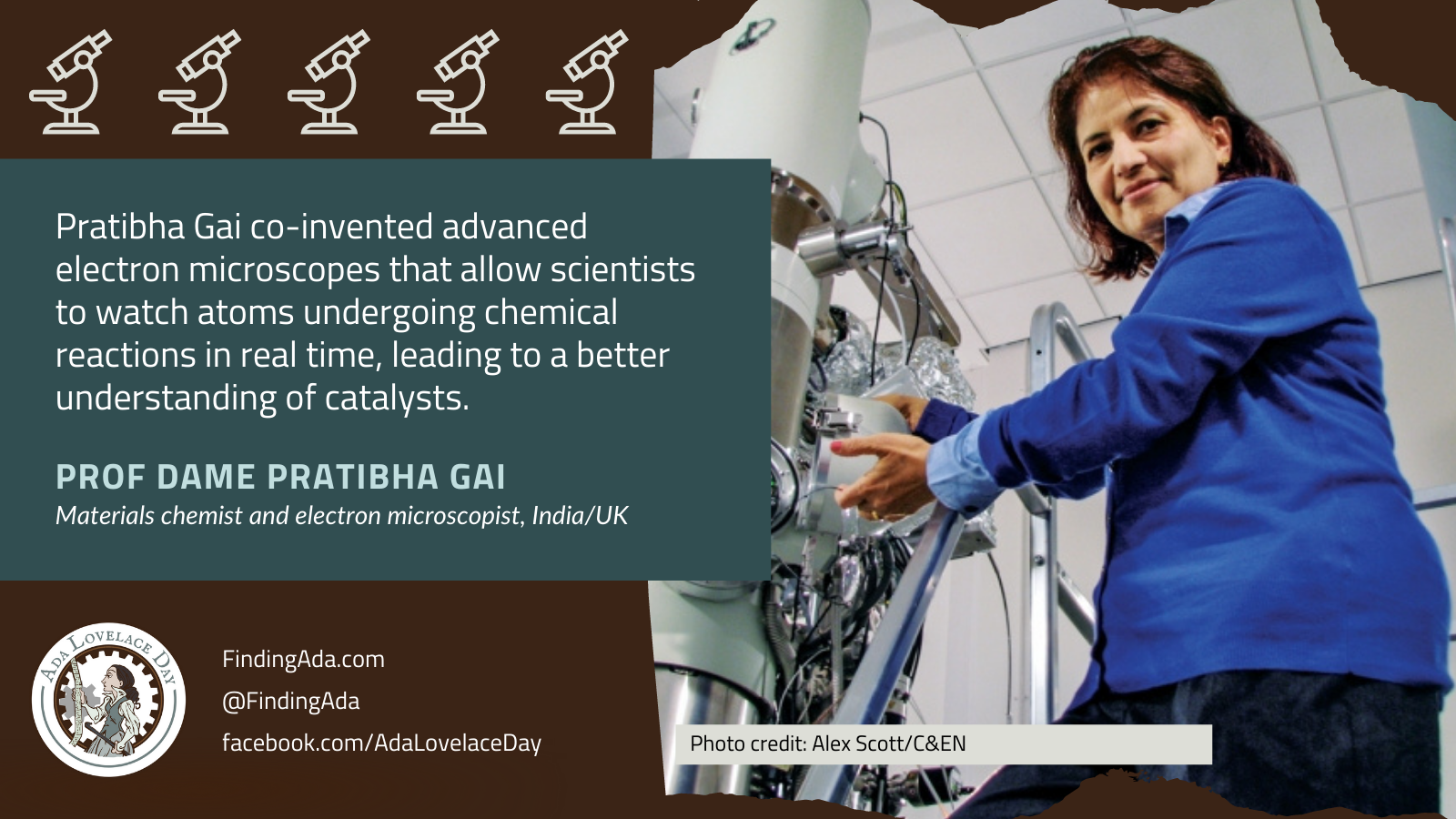Professor Dame Pratibha Gai
Professor Dame Pratibha Gai co-invented the atomic resolution environmental transmission electron microscope (ETEM), which allows scientists to visualise and analyse gas-catalyst reactions at an atomic scale, leading to a better understanding of how catalysts work.
Over two decades, Gai and her team redesigned a standard electron microscope. They drilled a hole through the imaging lens so that gas could be pumped into the electron microscope chamber, turning it into a chemical reaction vessel that could be used at high temperatures and pressures.
Using the ETEM, Gai became the first person to see “columns of atoms” interacting in real time during a reaction. Before the ETEM, such high resolution microscopy could only be done before or after a chemical reaction had taken place – it wasn’t possible to watch the reaction happening.
“I could see how a substrate interacted with a noble metal nanoparticle catalyst and watch the changing structure at atomic level,” she told Wiley Analytical Science Magazine. “It was thrilling.”
The newest version of the microscope is the environmental scanning transmission electron microscope (ESTEM), which allows scientists to see individual atoms undergoing chemical reactions.
Gai uses the ESTEM to more fully understand chemical reactions and to develop catalysts for use in fields such as medicine and sustainable materials. She has developed antibiotic nanoparticles to control infection in medical implants, and an environmentally responsible nanocoating process for strong polymers and coatings.
Gai became a Dame Commander of the Order of the British Empire For services to Chemical Sciences and Technology in 2018, and a L’Oréal-UNESCO For Women in Science Awards Laureate for Europe in 2013. She’s also an honorary fellow of the Royal Academy of Engineering, the Royal Society, and the Royal Microscopical Society.
Further reading
- Pratibha Gai, Wikipedia
- Pratibha Gai, The Royal Society
- Professor Dame Pratibha Gai DBE, Royal Academy of Engineering
- Profile: Professor Pratibha Gai – An eye for atoms, Microscopy and Analysis, 26 September 2013
- Pratibha L. Gai, Alex Scott, C&EN, 25 November 2013
- Atoms in Action with Professor Pratibha Gai (video), Professor Pratibha Gai, The Royal Institution, 1 October 2014
- Pratibha Gai is an inspiration, inventing world’s best microscope but kept it patent-free, Monit Khanna, India Times, 8 March 2020
